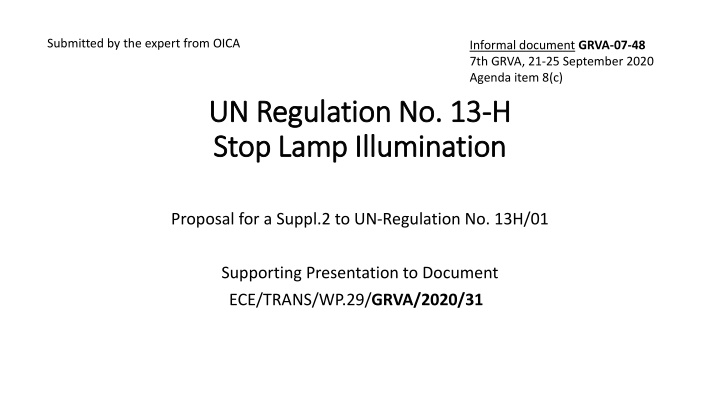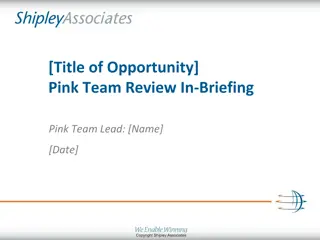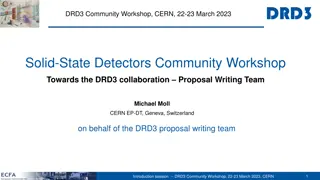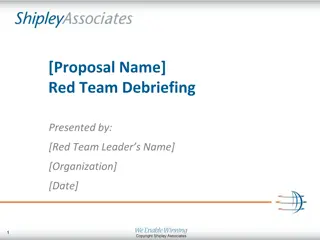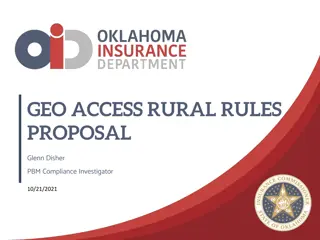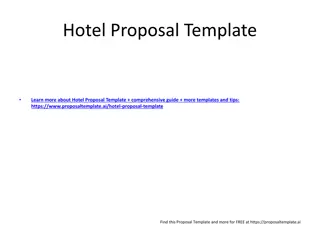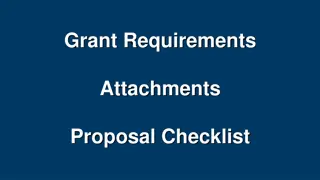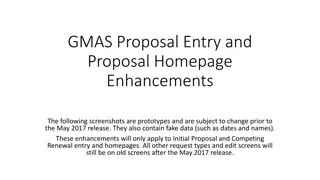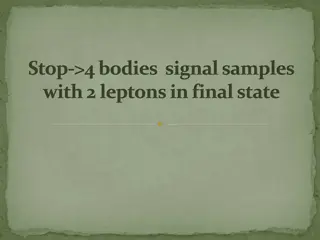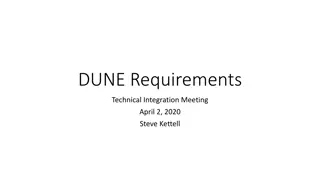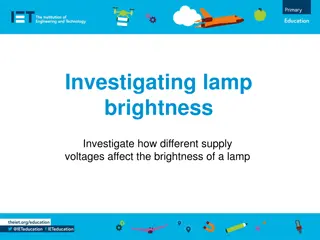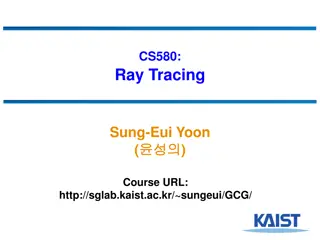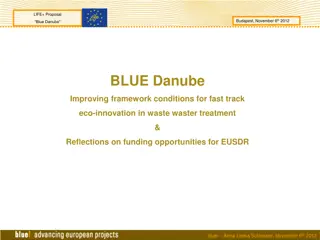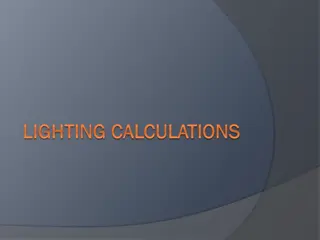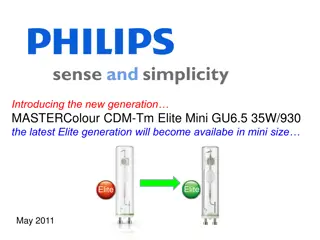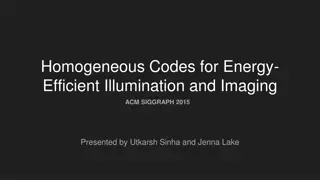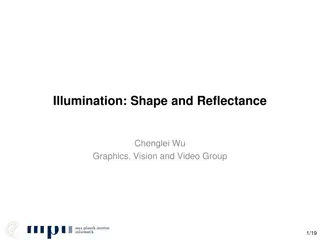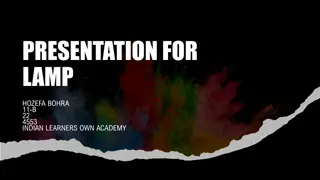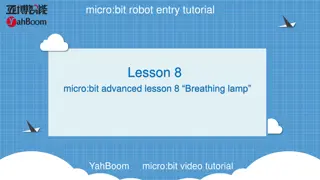Proposal for Updated Stop Lamp Illumination Requirements
The proposal suggests updating stop lamp illumination requirements to reflect modern EV capabilities and ensure consistency regardless of propulsion type. It addresses technical constraints and scenarios where stop lamps should illuminate or not based on deceleration sources and intentions. The aim is to enhance safety and signal clarity while avoiding flickering and unnecessary illumination.
Download Presentation

Please find below an Image/Link to download the presentation.
The content on the website is provided AS IS for your information and personal use only. It may not be sold, licensed, or shared on other websites without obtaining consent from the author.If you encounter any issues during the download, it is possible that the publisher has removed the file from their server.
You are allowed to download the files provided on this website for personal or commercial use, subject to the condition that they are used lawfully. All files are the property of their respective owners.
The content on the website is provided AS IS for your information and personal use only. It may not be sold, licensed, or shared on other websites without obtaining consent from the author.
E N D
Presentation Transcript
Submitted by the expert from OICA Informal document GRVA-07-48 7th GRVA, 21-25 September 2020 Agenda item 8(c) UN Regulation No. 13 UN Regulation No. 13- -H H Stop Lamp Illumination Stop Lamp Illumination Proposal for a Suppl.2 to UN-Regulation No. 13H/01 Supporting Presentation to Document ECE/TRANS/WP.29/GRVA/2020/31
Current regulation Current regulation UN UN- -R 13H/01 Suppl.1 R 13H/01 Suppl.1 For decelerations below 0.7 m/s , the stop lamps shall beON according to 5.2.22.1 may beON according to 5.2.22.2 shall beOFF accordingto 5.2.22.4 The driver of a following vehicle does not care about the kind of braking!
Current Regulation Current Regulation UN UN- -R 13H/01 Suppl.1 R 13H/01 Suppl.1 Example: Release of the accelerator pedal of an electric vehicle deceleration [m/s ] vehicle speed [m/s ] Was this intended ? 1.3 0.7 accelerator pedal released brake pedal activated time [min] SL on according 5.2.22.1. SL off according 5.2.22.4.
Rationales Of The Proposal Rationales Of The Proposal The stop lamp signal should reflect theintentionto decelerate. New technologies must be taken into account (increased deceleration capabilities of modern EVs) Stop lamp illumination requirements should be independent from the type of propulsion (combustion and/or electric) Technical constraints to be solved (e.g. accuracy of deceleration, flickering and too frequent illumination)
Rationales Of The Proposal Rationales Of The Proposal May illuminate Shall illuminate Shall not illuminate In cases where deceleration is generated by: In cases where: In cases where the intention to decelerate is obvious: The intention to decelerate depends on the context (e.g. Automatically commanded braking via AEBS would preferably generate stop lamps, while a slight deceleration from ACC to stabilize speed and distance to the preceding vehicle should not). Air/rolling resistance Road Slope Natural braking effect of the engine Driver presses the brake pedal Driver releases the accelerator of an electric vehicle, generating noticeable deceleration (>1.3m/s ) Automatically commanded braking is demanded (e.g. by AEBS, ACC ) and generating noticeable deceleration (>1.3m/s ) Selective braking (no intention to decelerate) Measures to avoid stop lamps flickering (Filtering / hysteresis) makes it difficult to define a concrete threshold below which the stop lamps should be illuminated. Avoid too frequent illumination, at low (unintended) decelerations The intention to decelerate is clear Avoid stop lamps flickering and ensures consistency of the signal
Current Status R13H.01 vs. Proposal Current Status R13H.01 vs. Proposal Example: Braking on flat level 0 0.7 1.3 deceleration m/s category: system used: friction brake system 5.2.22.1 driver actuated, CAT B regenerative braking regen brake system UN-R 13H/01 Suppl.1 blending (regen to friction) required friction brake system 5.2.22.2 automatically commanded braking permitted regen brake system (CAT A) blending (regen to friction) forbidden may 5.2.22.4 CAT A regenerative braking regen brake system change to blending (regen to friction) change to automatically commanded braking (friction brake) 5.2.22.3 selective braking brake system category: system used: friction brake system driver actuated, category B regenerative braking NATURAL DRVING RESISTANCE 5.2.22.1 NATURAL DRIVING RESISTANCE regen brake system required PROPOSAL blending (regen to friction) 5.2.22.4. permitted friction brake system 5.2.22.2 other applied relative decelerations forbidden regen brake system may blending (regen to friction) forbidden change to selective braking Intention of pure stabilization 5.2.22.2 5.2.22.4 selective / commanded brake Other Intentions than stabilization X+0.7 X+1.3 0 X deceleration m/s
Backup Backup
Stop Stop Lamp Lamp Illumination Illumination: : Proposal Proposal For For Harmonised HarmonisedBehaviour Behaviour: : Example: Braking on flat level BRAKE LIGHT ACTIVATION : SHALL MAY 1,3 X+1.3 0 0.7 deceleration m/s Combustion engine: driver service brake actuation LIGHT ON Combustion engine: commanded braking LIGHT MIGHT ON ON NATURAL DRIVING RESISTANCE BEV : service brake actuation by the driver LIGHT ON BEV: automatic commanded braking LIGHT MIGHT ON ON BEV: automatic regenerative braking LIGHT MIGHT ON ON X+0.7 X+1.3 deceleration m/s X 0
